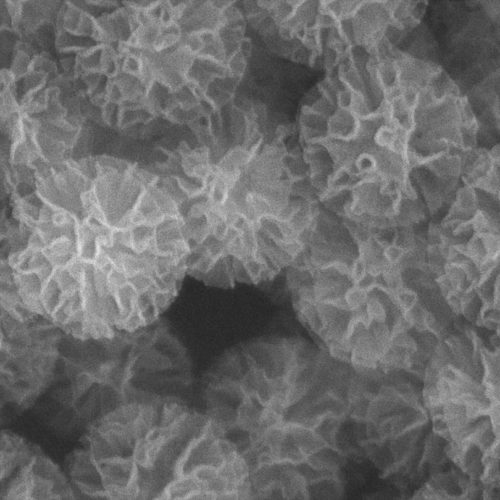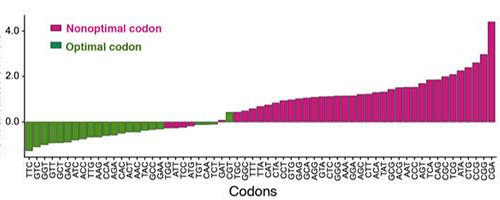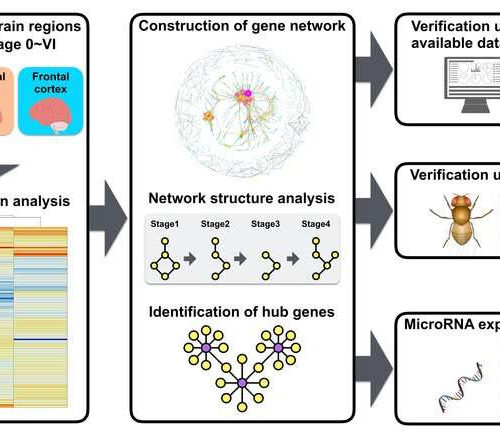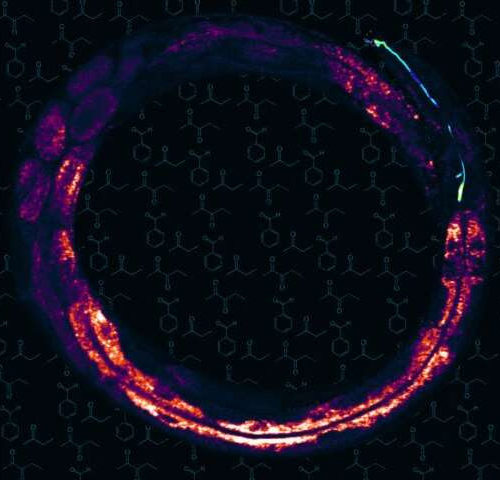CREDIT: CENTER FOR NANOSCALE MATERIALS, ARGONNE NATIONAL LABORATORY Alzheimer’s disease is the sixth leading cause of death in the United States, affecting one in 10 people over the age of 65. Scientists are engineering nanodevices to disrupt processes in the brain that lead to the disease. People who are affected by Alzheimer’s disease have a...
Tag: <span>Alzheimer’s disease</span>
Defects in the ‘Swiss-army knife’ of gene expression may contribute to neuronal diseases like Alzheimer’s
The growth, death, and diseases of complex organisms rely on the flow of information — from genes in DNA, through their transcription into RNA, and then translation of that transcript into proteins, which in turn build much of the living organism. Proteins that control this whole process are themselves subject to this overarching information flow...
High density EEG produces dynamic image of brain signal source
by Carnegie Mellon University Marking a major milestone on the path to meeting the objectives of the NIH BRAIN initiative, research by Carnegie Mellon’s Biomedical Engineering Department Head Bin He advances high-density electroencephalography (EEG) as the future paradigm for dynamic functional neuroimaging. The NIH Brain Research through Advancing Innovative Neurotechnologies (BRAIN) Initiative motivates researchers to...
New blood test for Alzheimer’s developed
by Margareta G. Kubista, University of Gothenburg A new blood test for Alzheimer’s disease has been developed under the leadership of researchers at the University of Gothenburg. The method is based on measuring a specific variant of tau protein in ordinary blood samples, which makes the test relatively simple and cheap to perform. The research...
CRISPR helps identify potential Alzheimer’s-related protein
by University of Tokyo Experts at the University of Tokyo have identified a new protein in the pathway that leads to Alzheimer’s disease. Researchers used the “molecular scissors” of CRISPR/Cas9 to search for new genes related to the neurodegenerative disease. The exact causes of Alzheimer’s disease remain unknown, but one of the most well-supported theories...
Large-scale analysis links glucose metabolism proteins to Alzheimer’s disease biology
NIH-funded research reveals protein network changes that may be druggable targets, biomarkers NIH/NATIONAL INSTITUTE ON AGING In the largest study to date of proteins related to Alzheimer’s disease, a team of researchers has identified disease-specific proteins and biological processes that could be developed into both new treatment targets and fluid biomarkers. The findings suggest that...
Gene-network analysis is a valuable new tool for understanding Alzheimer’s disease
by Osaka University Alzheimer’s disease (AD) is known to involve interactions among many different genes, making it difficult to pinpoint the specific mechanisms. But now, researchers from Japan have found a new way to identify genes implicated in neurodegeneration in AD. In a study published this month in Human Molecular Genetics, researchers from Osaka University,...
Watch that smell! Scents can regulate fat storage
Working with the laboratory worm C. elegans, Mutlu and her colleagues conducted a broad screen to investigate whether neurons can actively send signals that, without affecting feeding habits, could alter lipid metabolism. “When we found a connection with the sense of smell, we were very surprised. We expected a link with taste or related to...
Alzheimer’s patients may need dosing changes in medicines prescribed for other conditions
by American Chemical Society Patients with Alzheimer’s disease (AD) are often prescribed drugs for other conditions—including diabetes or high blood pressure—at the same doses as those without dementia. That practice might need to be reexamined in the wake of new mouse studies reported in ACS’ Molecular Pharmaceutics. The findings suggest that AD could alter absorption...
Discovery links glucose metabolism abnormalities to Alzheimer’s disease
By Rich Haridy A new study, funded by the National Institutes of Health’s National Institute on Aging, is offering novel insights into how protein expressions can be altered during the course of Alzheimer’s disease. The research suggests proteins regulating glucose metabolism and the anti-inflammatory activity of brain immune cells are linked with Alzheimer’s pathology, and...








